This is a drawing of a process which forms mountains on Earth.
Click on image for full size
Mountain Building
Mountains are built through a general process called "deformation" of the crust of the Earth. Deformation is a fancy word which could also mean "folding". An example of this kind of folding comes from the process described below.
When two sections of the Earth's lithosphere collide, rather than being subducted, where one slab of lithosphere is forced down to deeper regions of the Earth, the slabs pile into each other, causing one or both slabs can fold up like an accordion. This process elevates the crust, folds and deforms it heavily, and produces a mountain range. Mountain building and mantle subduction usually go together.
This process is illustrated in the figure to the left. The lithospheric slab on the right is subducted, while the force of the collision gradually causes the slab on the left to fold deeply. Along the way, melting of the subducted slab leads to volcano formation.
You might also be interested in:
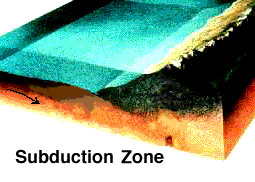
When two sections of the Earth's crust collide, one slab of crust can be forced back down into the deeper regions of the Earth, as shown in this diagram. This process is called subduction. The slab that
...more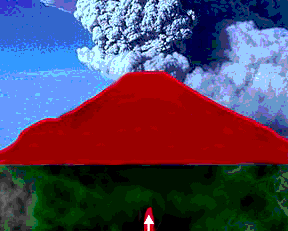
Volcanoes form when hot material from below risesand leaks into the crust. This hot material, called magma, comes either from a melt of subducted crustal material, and which is light and buoyant after
...more
Many kinds of surface features are clues that our lithosphere is sliding. Two types of features can form when plates move apart. At mid ocean ridges, the bottom of the sea splits apart and new crust is
...more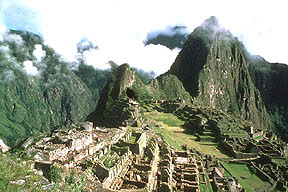
Peru's new president, Alejandro Toledo, was sworn in on July 28, 2001. The next day he visited Machu Picchu and Cuzco. There were ceremonies at both locations where Toledo asked for the blessing of the
...more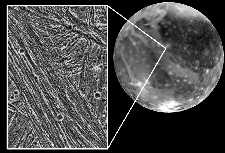
Instead of icy-volcanism, the surface of Ganymede reveals gradual surface deformation and stretching, a stretching similar to the crustal deformation of the Earth. In this case, the folding and stretching
...more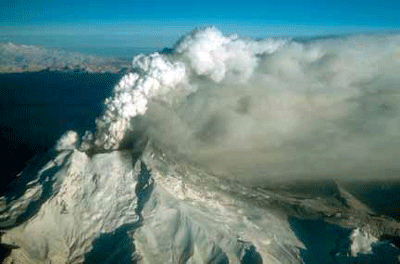
Ash is made of millions of tiny fragments of rock and glass formed during a volcanic eruption. Volcanic ash particles are less than 2 mm in size and can be much smaller. Volcanic ash forms in several ways
...more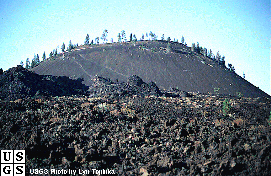
Cinder cones are simple volcanoes which have a bowl-shaped crater at the summit and only grow to about a thousand feet, the size of a hill. They usually are created of eruptions from a single opening,
...more














